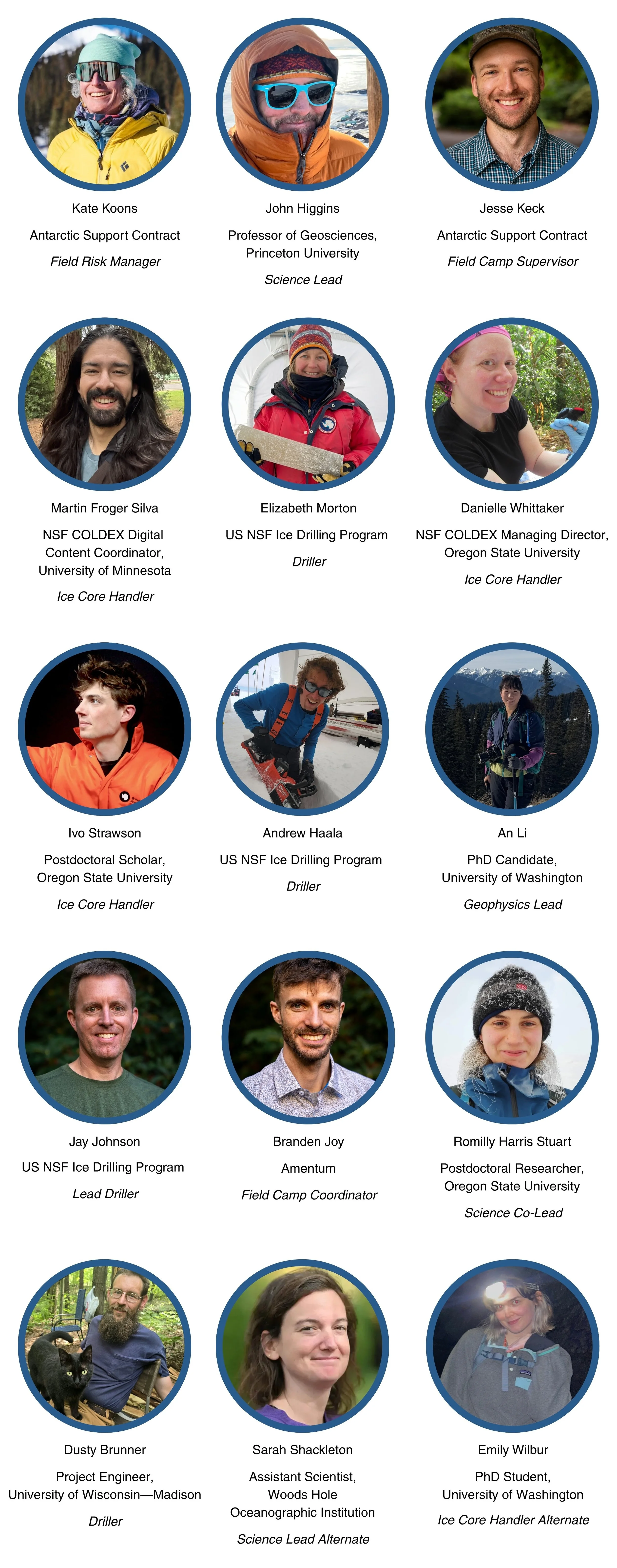NSF COLDEX is heading back to Antarctica!
Hello again from US National Science Foundation COLDEX! We’re back in your inboxes as we put the final touches on another NSF COLDEX field season—our fourth as an NSF-funded Science and Technology Center. This year, our team of scientists, researchers, engineers, and polar experts are heading back to an area of the Southern Continent we have gone to multiple times: the Allan Hills.
The Allan Hills is what’s known as a “blue-ice area.” Blue-ice areas are characterized by snow-free ice zones formed by winds so intense that they both prevent snow accumulation and erode surface ice to reveal ancient ice near the surface. This feature, known to occur in only a few other places in Antarctica, makes the Allan Hills a unique place and convenient opportunity to drill relatively shallow (100-200 meters or 300-600 feet) ice cores to recover the world’s oldest ice samples.
The group heading down for our fourth field season is once again a hybrid team of first-timers and seasoned staff, all with their own areas of expertise. Unlike past years where NSF COLDEX deployed two field teams, the 2025-2026 field season comprises just one team: I-187M. The I-187M team which will focus on drilling shallow ice cores at the Allan Hills on the margin of the East Antarctic Plateau where ice dating to as many as 6 million years old has already been found by NSF COLDEX teams. In addition, they will collect ground-based radar observations to better understand this old ice archive and also explore future ice core drill sites. They will carefully measure ice movement, clarify ice layering and structure at depth, and more.
To help get to know this year’s field team, we asked participants to share some of their thoughts and hopes for this field season. Danielle Whittaker, NSF COLDEX Managing Director, on her first Antarctic deployment, shared that she is “very excited for the entire field experience, which is so different from where I've worked as a biologist (tropical and temperate zones). I'm particularly interested to get hands-on experience with ice core drilling.”
An Li, PhD candidate at the University of Washington and another first-time Antarctic visitor, said: “I'm looking forward to collecting all of the geophysical data, learning the process of drilling the ice cores, camping on the ice for two months, experiencing the beautiful Allan Hills, learning to drive skidoos, and celebrating the holidays together as a research family!”
Finally, Jay Johnson, Mechanical Engineer with the NSF Ice Drilling Program is joining us for his 17th season to Antarctica as Lead Driller on this year’s team shared his excitement about using new technology in the field this year: “I am looking forward to being part of the first drilling team to try fluid drilling at the Allan Hills to see if it will help improve core quality.”
As team members make their final preparations, which includes final safety checks, finalizing their packing lists (Antarctica packing 101: bring multiples of everything), and reviewing their work plans, we’re sharing the full list of this year’s I-187M team for you to get to know the team whose work we’ll be sharing with you in this newsletter. Each of these individuals bring their own unique set of skills, expertise, and knowledge to the NSF COLDEX field team, and we are so excited to follow along their work this fall and winter. Here is the team:
The field team heads out in early November, and we’ll be updating you throughout the field season via this newsletter and our blog. We’ll also be posting images, videos, and more on our Instagram and LinkedIn accounts, so follow us there if you haven’t done so already!
NSF COLDEX thanks the United States Antarctic Program for logistical support, with coordination and support from NSF Office of Polar Programs, NSF Antarctic Infrastructure and Logistics Program, the NSF Ice Drilling Program, the NSF Ice Core Facility, and the Antarctic Support Contractor.

